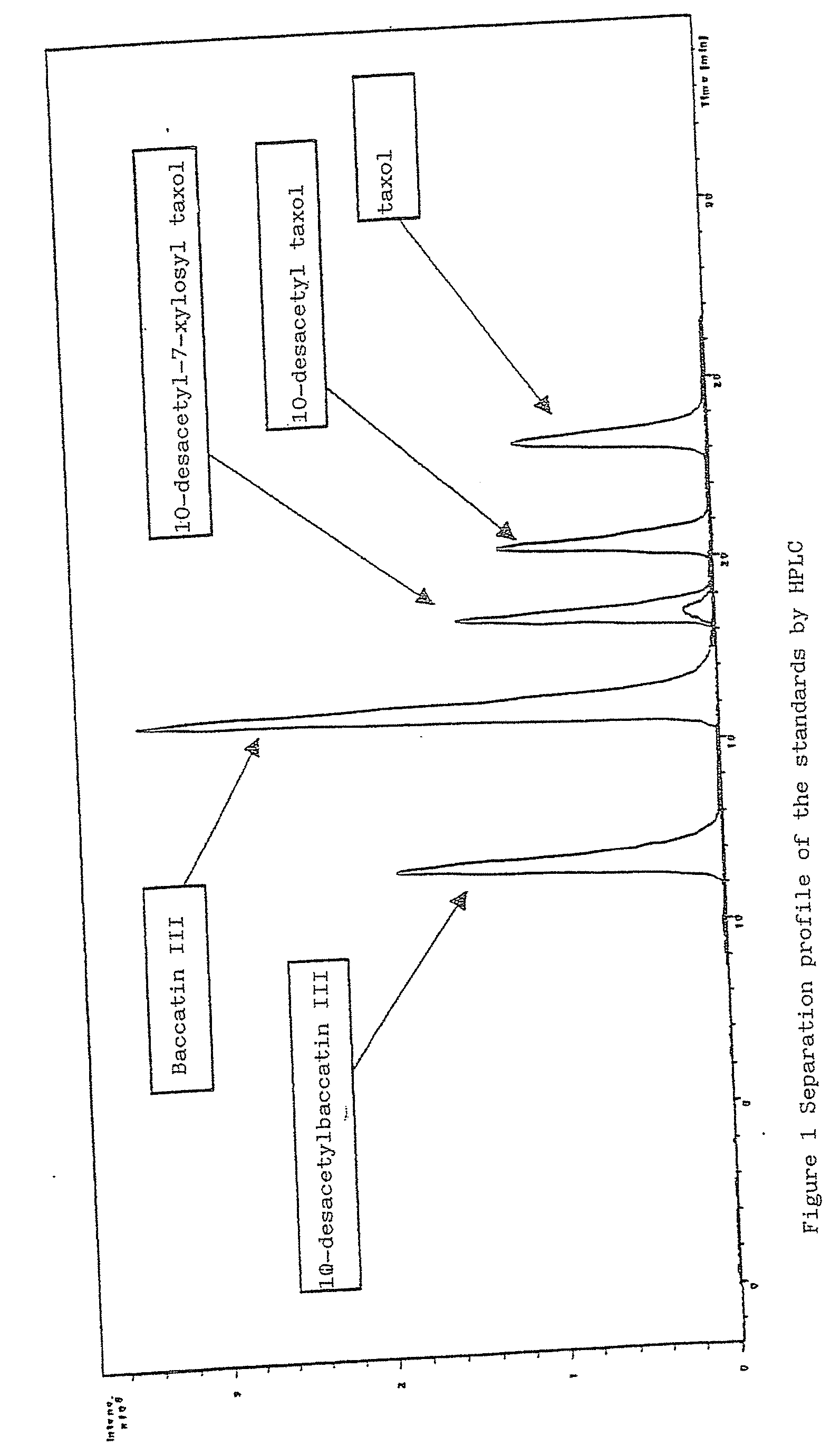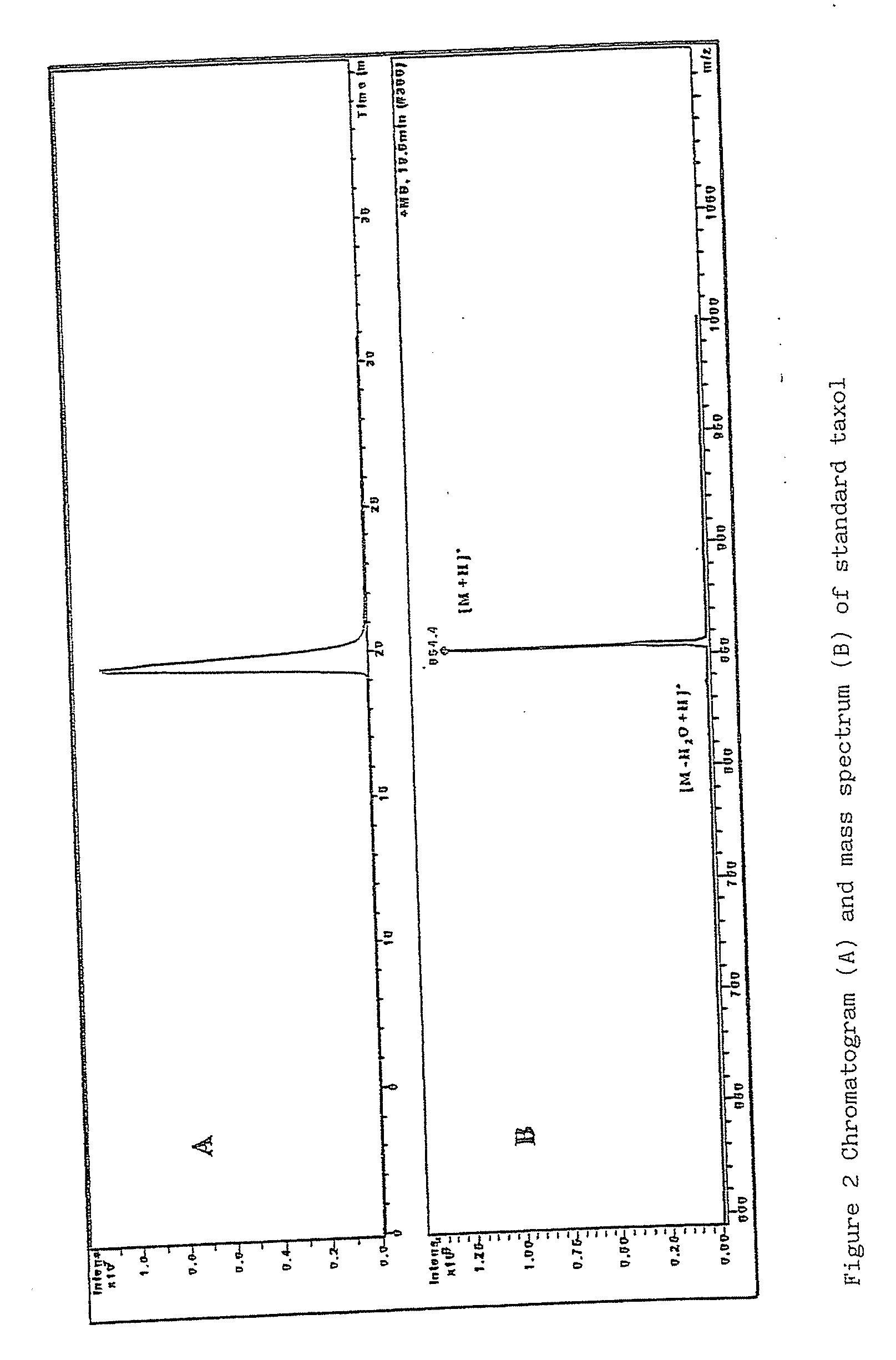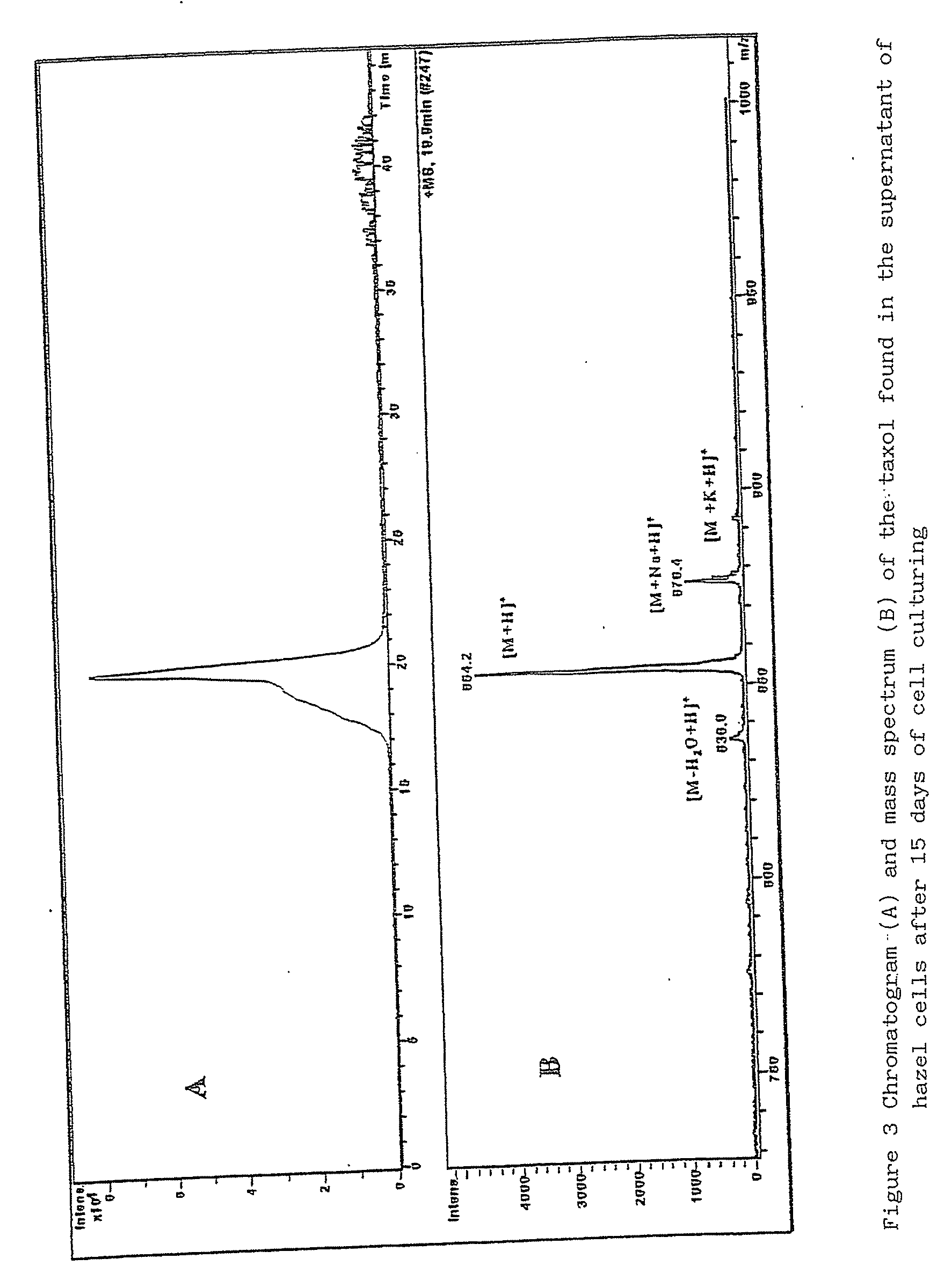Method for the production of taxol and/or taxanes from cultures of hazel cells
a technology of hazel cell culture and taxanes, which is applied in the field of cell culture production of active ingredients, can solve the problems of low taxol yield, serious danger to species conservation, and substantial availability problems, and achieve the effect of facilitating cultivation or regeneration in vitro and accelerating the ra
- Summary
- Abstract
- Description
- Claims
- Application Information
AI Technical Summary
Benefits of technology
Problems solved by technology
Method used
Image
Examples
example
[0058] The possibility of producing taxol and / or taxanes through hazel cell cultures was experimentally tested and compared with taxus cell cultures obtained in the same experimental conditions.
[0059] Therefore, in vitro cultures of plant tissues were prepared using leaves, stems and seeds of Corylus avellana (hazel) and of Taxus baccata. Both species used derive from land cultivations in Piedmont and Liguria.
[0060] All of the operations concerning the preparation and maintenance of the cultures in vitro were carried out under a vertical laminar flow sterile hood to ensure conditions of maximum sterility.
[0061] The plant material was first sterilised, immersing it in a 5% NaClO solution for 20 minutes, and then washed with sterile distilled water three times.
[0062] The plant parts were fragmented and transferred into sterile Petri dishes containing MS solid medium at a concentration of 4.3 g / l, containing vitamins (1 ml / l), sucrose (20 g / l), agar (10 g / l) and phytohormones at di...
PUM
| Property | Measurement | Unit |
|---|---|---|
| concentration | aaaaa | aaaaa |
| concentration | aaaaa | aaaaa |
| concentration | aaaaa | aaaaa |
Abstract
Description
Claims
Application Information
 Login to View More
Login to View More - R&D
- Intellectual Property
- Life Sciences
- Materials
- Tech Scout
- Unparalleled Data Quality
- Higher Quality Content
- 60% Fewer Hallucinations
Browse by: Latest US Patents, China's latest patents, Technical Efficacy Thesaurus, Application Domain, Technology Topic, Popular Technical Reports.
© 2025 PatSnap. All rights reserved.Legal|Privacy policy|Modern Slavery Act Transparency Statement|Sitemap|About US| Contact US: help@patsnap.com



